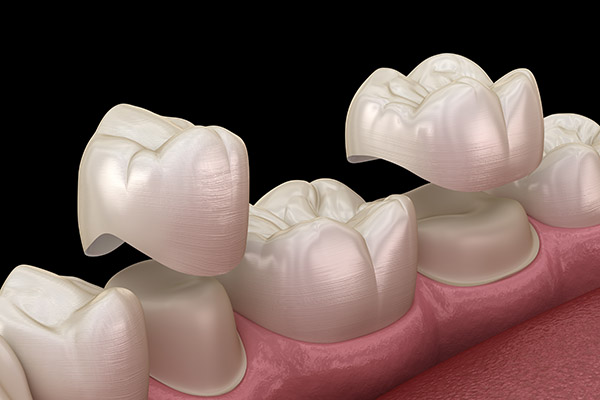 If you have never visited a periodontist, it probably means that you have strong, healthy gums. There are other times when this dentist may come in handy to improve your smile and oral health. A crown lengthening procedure can be necessary in some situations. If you need a crown but the tooth is too small for one, periodontists can help. You can feel good going into this procedure that it can be successful and produce the results you need.
If you have never visited a periodontist, it probably means that you have strong, healthy gums. There are other times when this dentist may come in handy to improve your smile and oral health. A crown lengthening procedure can be necessary in some situations. If you need a crown but the tooth is too small for one, periodontists can help. You can feel good going into this procedure that it can be successful and produce the results you need.
An overview of a crown
Crowns are common devices that dentists use to improve patients’ smiles and treat various conditions. A crown covers the entire tooth and is usually made of ceramic, porcelain, or composite resin. These materials allow the crown to be the same color as a natural tooth. Crowns are also natural-looking in shape and size.
A dental crown can go on any tooth. It stabilizes teeth that have cracks and fractures. A crown will also protect a damaged tooth from suffering further issues. Crowns are a good option when there is a large cavity that a filling cannot support.
When a periodontist will do a crown lengthening procedure
Often, a crown should fit over an affected tooth without difficulty. But there are times when there will need to be a lengthening process so that it will fit properly. This is necessary when the tooth is too small and will not accommodate the crown. Also, if the patient has decay in the tooth below the gumline, this procedure could be the right option.
Preparing the patient
To do a crown lengthening treatment, the periodontist will first get the patient comfortable. Next, the patient receives a shot of a local anesthetic, numbing the area. Once the medication takes effect, the process can begin. The dentist cuts the gums and pulls them away from the teeth, exposing the roots and bone.
Finishing up the procedure
After opening up the gums, the periodontist will recontour the gums. This ensures that the teeth are the proper length for the crown. The dentist will then clean the area to prevent infection. The dentist then sews the gums back together.
After the procedure
The anesthesia will wear off a few hours after the surgery. The patient may feel some pain and soreness in the affected area for a few days. The periodontist will prescribe pain medication to soothe any discomfort the person feels. The patient should avoid hot foods for the first day after the surgery. There may also be some sensitivity to hot and cold foods and beverages. Within four to six weeks after the procedure, the periodontist will follow up with the patient.
Feel good about your upcoming surgery
If your teeth are too small for a crown to fit, there is an option to make things right. Your periodontist can perform a crown lengthening surgery. If your dentist has told you that a crown will not fit properly, do not give up hope. Make an appointment with a periodontist’s office today and find out more about crown lengthening.
Request an appointment or call Charles E. Dyer IV, DDS, MS, PC at 281-213-0900 for an appointment in our Cypress office.
Related Posts
A frenectomy is a dental procedure a periodontist performs to remove or modify the frenulum, a small fold of tissue that connects the lip or tongue to the gum or mouth. While this procedure is often associated with addressing issues related to the tongue or lip, it can also be beneficial for patients experiencing speech…
Periodontics is a specialized branch of dentistry that focuses on diagnosing, treating, and managing conditions that affect the gums and underlying bone. The gums are often looked over by many regarding care. However, they play an important role in maintaining the function and health of the entire mouth. Partnering with a periodontist or a gum…
Are you searching for a "periodontist near me"? Read on to learn more. Periodontal disease requires the expertise of a periodontist near me for diagnosis and treatment. These dental professionals see many individuals at different points in the progression of gum disease. The symptoms include bleeding gums, bad breath, and deep pockets between the gums…
